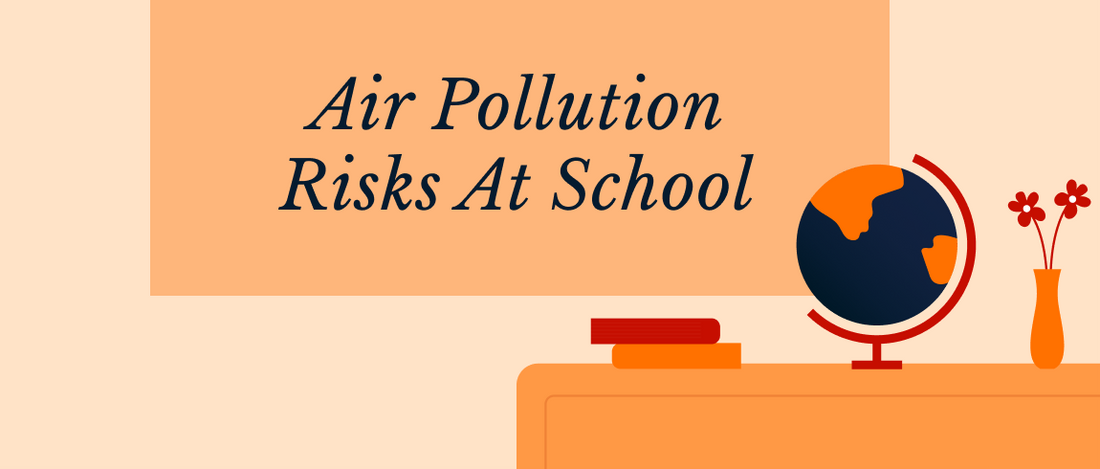Even if your children didn’t come back from school with scratched knees today, they have been exposed to different harmful airborne particles for a very long time - and those can harm them both in the short-term and the long run.
Such pollutants are hazardous for adults, but in fact, children are much more susceptible to air pollution: with their organs and systems constantly growing, young children breathe twice as fast as adults.
So what can be done to reduce the airborne risks to your children?
1. Keeping cars away from school areas
Air pollution caused by vehicles around schools is dangerous for both their passengers and everyone in their area. The in-car pollution can be up to 15 times as high as the air outside: a car is a closed space but isn’t built to be airtight, so toxic emissions from surrounding vehicles can enter it quickly.
The effects on both the environment and human health from the pollution released from car engines have been discussed in length over the years. However, those effects are even more powerful when it comes to children because their immune systems and lungs aren’t fully developed. In addition, due to their breathing zones being closer to cars’ exhaust heights, young children can breathe up to 60% more polluted air during drop-off and pick-up times.
You should urge the school and other parents to adopt programs that keep cars away from the school area: “School Streets,” for example, is a UK initiative that promotes clean air zones around schools. Such programs dramatically reduce children’s exposure to toxic air pollution (-44% NO2 according to London’s recent experiment of the world’s first Ultra Low Emission Zone [ULEZ] program).
Another option is promoting carpools and walking and cycling to schools. That won’t only help reduce air pollution hazards but will also lessen road danger, moderate the rush hour traffic, and most importantly, benefit the children’s mental and physical well-being.
2. Discussing cleaning methods
As we saw on a previous blog, many of today’s cleaning products are key contributors to indoor air pollution.You should be aware of the school’s cleaning routine and methods, and if needed, insist on making improvements, for example:
• Making sure that dusty surfaces are cleaned with wet cloths instead of dusting.
Inquiring about the school’s vacuum cleaners and their quality, as well as the frequency of their use.
• Requesting the school to use natural, low- or zero-VOC cleaning products.
Banning the use of air fresheners and similar products.
• Encouraging regular checks of mold and fungus.
• Cleaning regularly and effectively is crucial to keeping indoor air pollution low, so it’s a good idea to keep your eye on the school’s maintenance plan.
3. Planting low-allergy hedges between roads and schools
Think about it like sound walls for air pollution: trees and plants are a great tool for reducing and filtering toxic particles, especially when carefully selected, properly groomed, and strategically placed.
Considering the fact that about 10% of children are dealing with asthma, it’s a good idea to choose low-allergy vegetation. The available types are vast - schools and parents can find the right botanical solutions using i-Tree - software developed by the USDA Forest Service, providing extensive analysis on various plants and their compatibility to urban needs and requirements.

4. Investing in smart air filtration and purification systems
Air pollution not only inhabits the areas around schools but is also created in the classroom. Sitting in an enclosed space for so long produces high levels of CO2, which can explain the short-term symptoms that students experience daily: fatigue, difficulty concentrating, headaches, and even shortness of breath.
Ventilating classrooms is crucial, but it needs to be done right. For instance, opening the windows right after peak times will do more harm than good, especially on ground floor rooms that face the road, as particle concentrations are still high.
Another critical factor here is the existence, or rather the inexistence, of effective ventilation systems and air monitoring in classrooms. A study conducted at Taipei University clearly showed how proper ventilation reduces air pollution indoors and prevents tuberculosis transmission almost entirely.
Click here to learn more about Aura Air’s medically-proven solution for indoor air filtration, purification, and monitoring.



